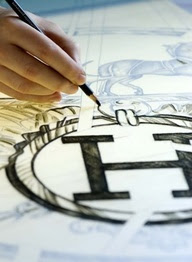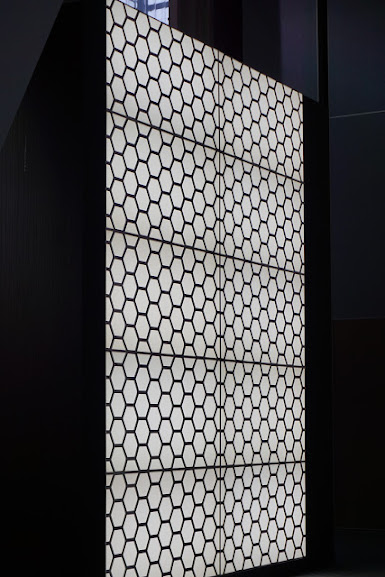Friday's Why In Design Column: the beauty and history of rich, Indian printed table and bed linens
I love fabrics of all kinds – cotton, silk, brocade, woven.
Lately, I’m particularly interested in the bold printed fabrics from India, which often take inspiration from nature. I appreciate the many choices available now for bed covers and table linens, and bring a fresh, vibrancy into a home. While in Venice Beach, California last week and strolling and taking in the outrageous sites of this eclectic area, I stumbled upon a small shop with beautiful Indian textiles and jewelry. Of course, I must share this with you. The gentleman who owns this shop offers his wares for reasonable prices. I picked up this delightful full-size bed cover, which I plan to use as a table linen in my dining room in NYC, then outside under my pergola this summer in East Hampton. The deep, cobalt blue will blend perfectly with my summer hydrangeas.
Sea Lions, Pelicans and various birds all together
in La Jolla cove

Let's talk about the Indian technique of dyeing fabric:
Mordant dyeing creates vibrant and rich colors that are impervious to fading. For hundreds of years this technique has been created by Indian textile workers. It took a while for Europe to catch up to India and until the late 18th century, India was creating the most advanced textiles in the world. Madder Dye is derived from an herbaceous root and when grown in soil with shells, it produces a vivid red color base.
Lately, I’m particularly interested in the bold printed fabrics from India, which often take inspiration from nature. I appreciate the many choices available now for bed covers and table linens, and bring a fresh, vibrancy into a home. While in Venice Beach, California last week and strolling and taking in the outrageous sites of this eclectic area, I stumbled upon a small shop with beautiful Indian textiles and jewelry. Of course, I must share this with you. The gentleman who owns this shop offers his wares for reasonable prices. I picked up this delightful full-size bed cover, which I plan to use as a table linen in my dining room in NYC, then outside under my pergola this summer in East Hampton. The deep, cobalt blue will blend perfectly with my summer hydrangeas.
I am decorating a home in California now and the deep blues and greens of the Pacific Ocean are influencing me
a quiet moment in Venice Beach, California
Sea Lions, Pelicans and various birds all together
in La Jolla cove
we took inspiration from the natural beauty on this design project
We chose interesting, eclectic art
and our wall paint colors accordingly
these Indian print fabrics go well in the quintessential California home

Let's talk about the Indian technique of dyeing fabric:
Mordant dyeing creates vibrant and rich colors that are impervious to fading. For hundreds of years this technique has been created by Indian textile workers. It took a while for Europe to catch up to India and until the late 18th century, India was creating the most advanced textiles in the world. Madder Dye is derived from an herbaceous root and when grown in soil with shells, it produces a vivid red color base.
I love how these fabrics take inspiration from nature
As far back as the 1500s when emperor Babur, the first Mughal emperor of India, brought his love for
flowers and nature into the population this aesthetic has been popular.
These styles have evolved over the generations in India and are still a
popular motif today. Through the 18th century European and Chinese manufacturers
influenced the designs and added their own cultural details. There is usually a central tree or
flowering tree as the main design including water or lotus and with marine and other animals in the design. The flowering tree
symbolizes a wish or desire of some sort. I enjoy this optimistic approach and aesthetic. All of these designs mixed together when many countries began trading their textiles and other items, from China to Indonesia and England. Each culture added their own flair to the new technique when creating their own version. India was the greatest exporter
of fabrics in the world through the 19th century and heavily influences what we see in fabric design today.
This particular fabric is a combination of different blues, emerald green and an usual maroon color, and all decorated with flowers, a flowering tree and beautiful bird motif. It looks lovely with my John Audubon print, my Charlotte Moss wallpaper and in my small dining room.

























